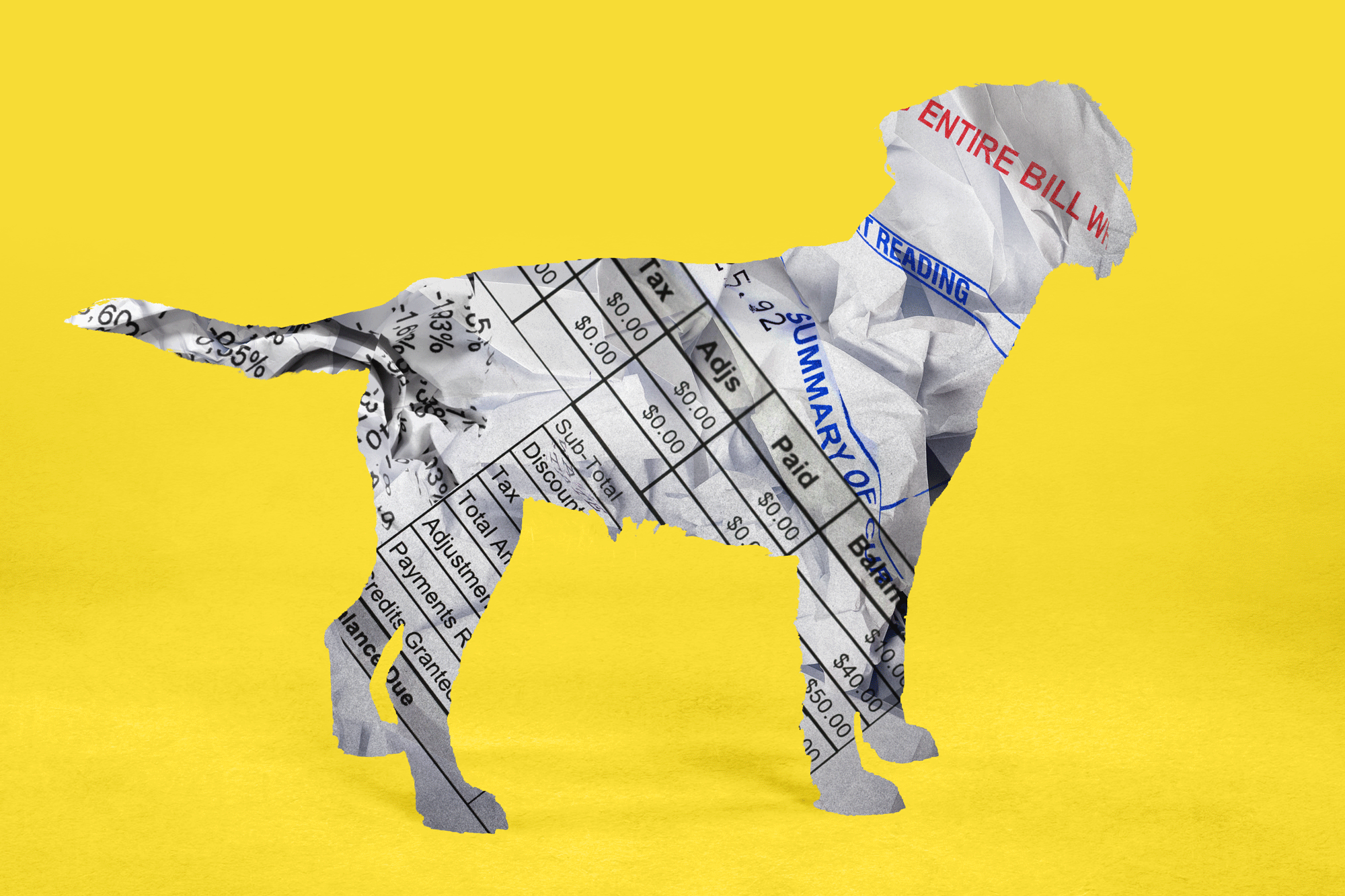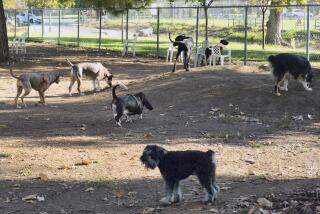Pet ER Treats All Patients Large and Small
- Share via
COLUMBUS, Ohio — An emergency medical technician guides a patient to a scale and shouts, “Two thousand one hundred and thirty-five pounds!”
Part hospital, part barn, the large-animal clinic of Ohio State University Veterinary Hospital is a place where everything’s bigger--the needles, the gurneys, the medical challenges.
For horses, cows, bulls, goats, llamas and alpacas, the clinic is the 24-hour ER for pets and farm animals.
Brought in during the middle of the night for surgery, the patient that tipped the scales at more than a ton is a muscular brown horse with a blocked small intestine.
Hope Hedrick, an equine technician in the clinic’s intensive care unit, says the horse, muzzled and hooked up to IVs and monitors, will survive, but she has seen too many others that haven’t.
“That’s the worst part of this job,” she says. “When there’s nothing more you can do and you have to deal with the owner’s emotions.”
About 20,000 patients a year pass through the emergency room, which is the clinical teaching center for Ohio State’s veterinary college--one of 31 in the nation and the only one in Ohio, said hospital administrator Dr. Richard Bednarski.
Most of the emergency cases involve the everyday accidents that happen to pets--being hit by a car or ingesting toxins like rat poison.
Dr. Debra Bishop recalls a dog that lapped up its owner’s insulin--4,000 units. It had to be monitored closely for days.
In the ICU, cages filled with sedated animals line the walls. In one, a tiny white poodle is hooked up to tubes and monitors. “He has esophageal disease,” Bishop says as she scans the monitors. “He’s getting a blood transfusion.”
Most of the patients are here for secondary care. They’ve been seen by local veterinarians who referred them for the specialized treatment offered by the hospital. The small-animal clinic is open until midnight.
The tough cases help educate the students.
A white mixed-breed dog named Lucy lies on the floor next to an exam table. She breathes heavily and coughs frequently. Her stomach is swollen with liquid.
Students in blue scrubs stoop to lift the 13-year-old dog to the table. Bishop stops them and does the exam on the floor. Lucy’s tail wags weakly as Bishop kneels on the linoleum beside her.
Bishop feels Lucy’s stomach and listens to her breathing. A student in a white lab coat crouches beside the doctor, stroking Lucy.
Bishop is as focused on the students as she is on the animal. “What do you think we should do about this patient?” Bishop asks.
Chest X-rays, they answer.
Bishop nods approval and stands as another dog enters the room. Corky was hit by a car and is having problems walking. A technician clips X-rays to a screen, and the students gather around Bishop as she examines the films.
“Do you see anything?” she asks.
The students study it silently. “Is that a fracture?”
Bishop traces her finger along a vertebra near the tail. They discuss whether Corky has a fracture or was just wiggling when the picture was taken.
Back in the large-animal clinic, technician Hedrick makes her rounds, nuzzling horses and checking machines. Her face lights up as she recounts helping deliver a foal.
She called the doctor when the mare began acting strangely, but it was already too late. When the vet arrived 15 minutes later, the foal was emerging. The mare delivered in 30 minutes; it usually takes several hours.
“She was a long-legged filly when she came out! I worked a lot of overtime that night, but it was worth it.”
More to Read
Sign up for Essential California
The most important California stories and recommendations in your inbox every morning.
You may occasionally receive promotional content from the Los Angeles Times.













